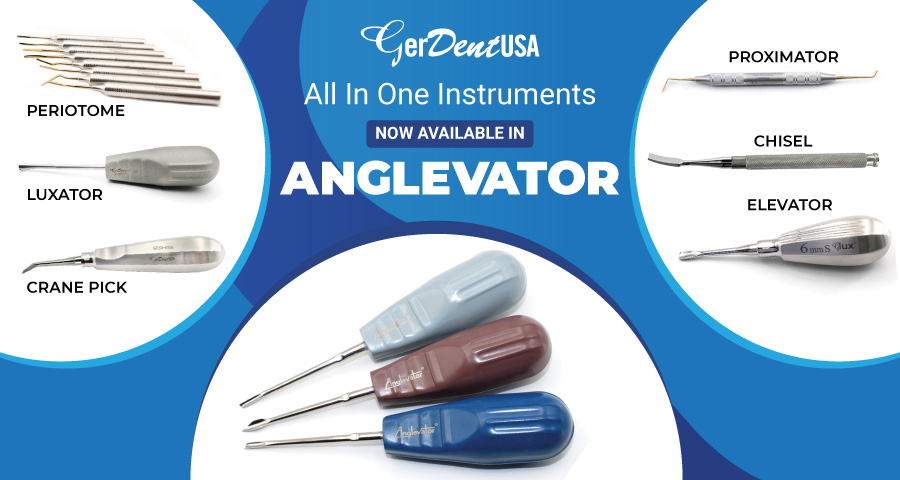Dental Instruments need efficient cleaning procedures for decontamination and to prevent possible cross-infection in patients. As dentists, we strive to provide standard quality treatment for our patients. Sterilization of dentistry instruments is an essential factor in the success of any treatment procedure. There are many ways of sterilizing your surgical equipment. Among them, steam sterilization is the most common one. This article will provide detail on "how is dental equipment sterilized."
Sterilization of Instruments in Dentistry
Dental equipment is divided into three categories. Among them are critical items, semi-critical items, and non-critical instruments.
Critical equipment includes instruments such as the periodontal Scale and bone drills. These instruments penetrate the skin to contact structures such as the bone. Critical instruments need processing according to the set standards. This is to ensure that they are fit for future use. Steam sterilization is the most common method for the sterilization of such equipment. Steam sterilization is performed in an Autoclave.
The autoclave regulates temperature, pressure, and time. This is for exposure of steam to the instruments. Other than that, single-use instruments can also come in use for dental treatments. Such instruments are discarded after use.
Semi critical instruments include tools that only come in contact with the mouth or nose. These are instruments that do not penetrate the skin. The instruments can also come into contact with other structures such as the cheeks. These instruments have a lesser risk of transmission of bacteria. Semi critical instruments include instruments such as mouth mirrors and amalgam condensers etc.
Non-critical instruments have the least risk of transmission. Examples of such items are blood pressure cuffs and X-ray vests. These items touch only the patient's clothes and can be treated with a standard disinfectant.
How to Sterilize Dental Instruments?
Sterilization of the dental tools includes physical cleaning of the instruments. Physical cleaning of the instruments is done by immersing them in a disinfectant. Drying the instruments after disinfection is also very important. Other than that, instruments are then processed in an autoclave for steam sterilization.
Sterilization is an essential step in reprocessing reusable dental instruments. Sterilization of dental instruments is also important for instruments that have become contaminated. This contamination is due to exposure to saliva, blood, and other body fluids. Sterilization of dental instruments aims to remove bacteria and other microorganisms. The bacteria, microorganisms, and spores can potentially lead to cross-infection.
Steam sterilization is the most common way of cleaning dental surgical instruments. It may also be the most cost-effective and safe way of cleaning dental tools. The sterilization process is validated to ensure that the cleaning is taking place reliably. The process should also be consistent in reproducible conditions.
To kill the contaminants, the instruments are exposed to steam in an autoclave. This is at a specified temperature for a specified period of time. The temperature for all small steam sterilizers is 134- 137 degrees. The pressure and time are 2.1 to 2.25 bar gauges for at least 3 minutes. But, other options for different combinations still exist.
Some sterilizers can perform more than one cycle of sterilization. It is better to address the type of cycle rather than the machine type. For convenience, terms such as Type N or non- Vaccum sterilizer and Type B or vacuum type sterilizers come into use.
Instruments can be wrapped for sterilization if processed in a vacuum-type sterilizer. A vacuum-type sterilizer is for wrapped instruments. It is necessary to follow the manufacturer's instructions for wrapped instruments. Other than that, the material of the wrap has to be compatible with the steam sterilizer. Usually, self-sealing pouches come in use at most dental offices. Also, make sure that the wrap is a single layer only. When wrapping several instruments in the same pouch, avoid overlapping of the tools. Also, appropriately sized pouches need to be used for the instruments. The sealing method of the pouch ensures the A-septic opening of the instrument packs. Also, it creates a microbial barrier between the instruments and the autoclave.
Some don'ts with the sterilized instruments:
Inspection of instruments after coming out of the sterilizer is necessary. This is especially important in the case of wrapped instruments. This is to ensure the proper cleanliness of dental equipment. You should not use the instruments if the pouch's outer wrapping or seal is damaged or if the pack is moist. Other than that, look for damage to the labeling of the pack. Or, the pack usually has an indicator, which changes color. If the indicator has not changed color, then the instruments are not considered properly sterilized. The instruments should not be used when visibly unclean or soiled. You should instead, open the pack and return the instruments for decontamination again.
Sterilized versus sterile instruments:
Instruments are considered sterilized when sterilized "unwrapped" in a sterilizer. Also, when the instruments are stored in the dental office in a manner that limits further contamination. When instruments undergo sterilization, the process of potential cross-contamination between patients is stopped.
Instruments are sterile when clean and wrapped to be processed in a sterilizer. The sterilizer should be designed for wrapped instruments. To maintain their sterility, the instruments are kept in the sterilization pack. This is until immediately before use. Single-use instruments are also considered sterile. These are to be used according to the manufacturer's instructions. Such instruments come in use during the procedure and then disposed of.
All in all, it is preferable to use reusable instruments. These instruments should be able to withstand cleaning in an automated sterilizer. Decontamination of reusable instruments by steam sterilization requires the use of the manufacturer's instructions.


